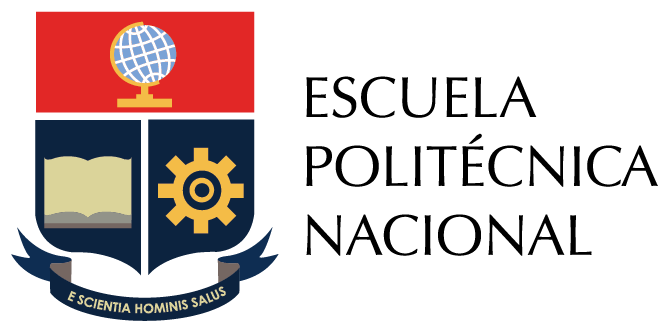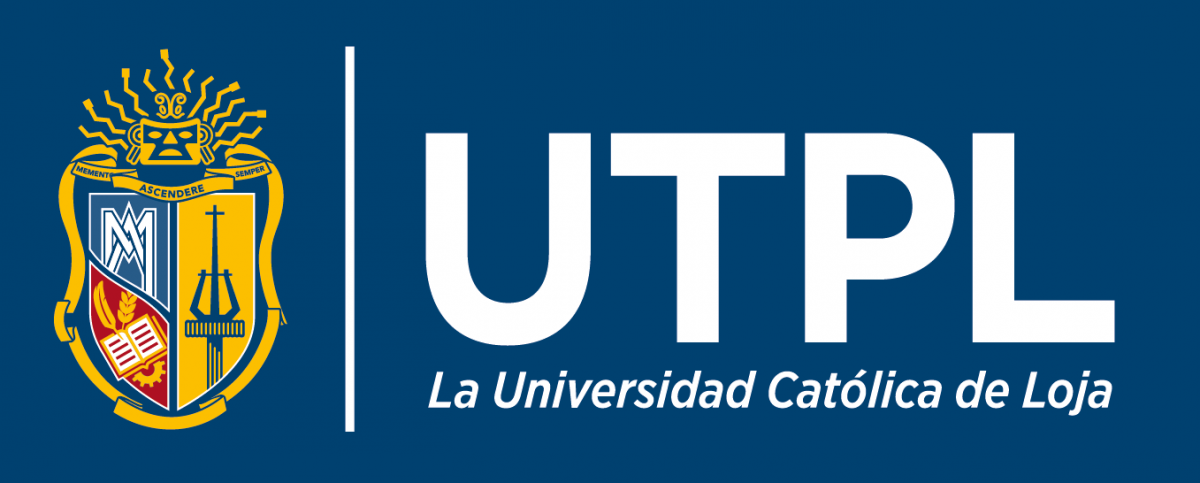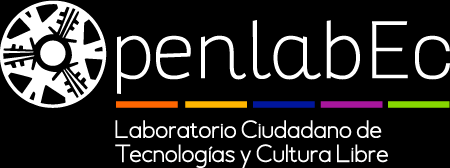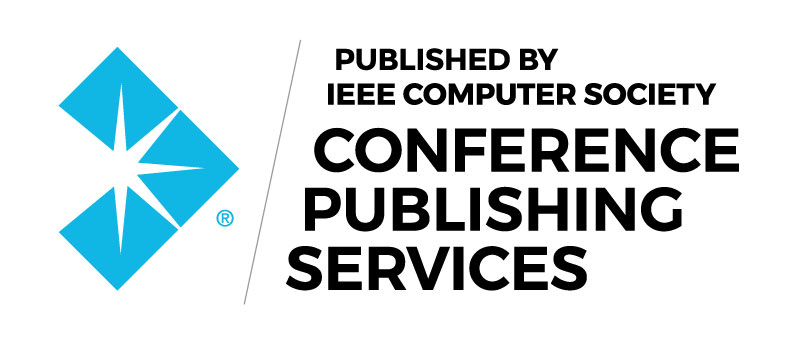| Title |
Authors |
Abstract |
File |
| A Structured Literature Review of Research on Conversational Agents that Empower Health Interventions |
Nico Pietrantoni |
Conversational agents (CAs) are becoming
increasingly popular in people’s everyday lives. CAs are
illustrative of recent technological advancements that have
disrupted numerous domains, including healthcare, where they
promise engaging, personalized, and effortless interactions that
go further than static exchanges, and have the potential to
improve users’ behavior. To be effective as a vital instrument
for enhancing users’ well-being, CAs have to be designed for the
task. However, research on how the CA should be designed to
attain the intended behavior, specifically compliance, remains
scant. Against this background, a systematic literature review
was conducted, identifying 48 papers that cover CA features
required for users to achieve the intended behavior in health
interventions. Based on the results, this paper provides novel
implications for future research. |
Download Paper |
| HELP! It's up to YOU to DONATE - A Structured Literature Review on Conversational Agents and Promoting Donation Behavior |
Nico Pietrantoni |
In a well-functioning society benefactor donations
for social causes are vital. The act of donating, e.g., money to
charity, can impact others’ lives and provide essential services
to the indigent. With the rise of conversational agents (CAs) and
technology that increasingly impacts our daily lives, it has
become important to understand how CAs can possibly promote
donation behavior. However, we know little about how to do
this, and existing research remains fractured. To improve our
knowledge, a literature review was conducted to gain a
comprehensive understanding of the current state of research.
In total, 41 papers from various donation contexts (e.g., money,
time, in-kind) were identified. This review identifies key trends
and provides insights to guide future studies. Further, practical
implications are derived to equip practitioners with a structured
overview. |
Download Paper |
| A Topic Modeling Approach to Analyze Teaching Innovation Projects |
Shomira Rosales ,Ruth Reátegui, Charlie Cárdenas Toledo |
Topic modeling is a data mining strategy that
permit to automatically extract the topics discussed in a given
corpus. The objective of this study is to discover the topics that are
common in a set of educational innovation projects proposed by
university teachers. The LDA algorithm, which is a generative
probabilistic model, was used. To identify the correct number of
topics the coherence and perplexity metrics were applied. Ten
topics were obtained, which, among other aspects, reflect the
careers and subjects that work the most in educational innovation
projects, as well as the methodologies, strategies and resources
that teachers use in their projects. |
Download Paper |
| Enhancing Spatial-Temporal Orientation Skills through a Psychoeducational Serious Game |
Marco Santórum, Mayra Carrión-Toro, David Yánez, Verónica Maldonado-Garcés, Julián Galindo, Patricia Acosta-Vargas |
This paper presents the development of a
gamified application to enhance spatial-temporal orientation
cognitive skills in children aged 3 to 5 years. The initial phase
involved determining the specific needs of this age group, which
established the scope and motivated the development of our
serious game. The application utilized the iPlus methodology
and the Scrum framework to ensure an effective and iterative
development process. By employing the iPlus methodology,
requirements were gathered, and collaborative design activities
were conducted. The Scrum framework facilitated agile project
management, enabling the development of a serious game
comprising five engaging minigames, each designed to target
specific cognitive skills. The application also includes features
for progress tracking and personalized learning experiences.
The successful implementation of the game highlights the
effectiveness of combining the iPlus methodology and Scrum
framework in developing gamified educational applications. |
Download Paper |
| Recommendations for the Development of Video Games to Reduces Stress on Young People |
José Aldana, Sebastian Trujillo,Eduardo Díaz |
Nowadays, stress in young people is a frequent
problem that can affect their physical and mental well-being.
This article aims to propose nine recommendations for the
development of video games to reduce stress in young people.
The recommendations were based on the analysis of 25 research
works and 7 video games about of themes and contexts, video
game design, aspects such as color selection for video games,
creation of scenarios and gameplay. For a better understanding,
an illustrative example was developed to show the use of the
recommendations in the development of a video game to reduce
stress. This work may be of interest to video game designers,
psychologists and educators who need to develop video games to
reduce stress in young people. |
Download Paper |
| Machine learning and balanced techniques for diabetes prediction |
Liliana Narvaez,Ruth Reátegui |
Diabetes mellitus is a metabolic disorder
characterized by high blood glucose levels, resulting from defects in
insulin secretion, insulin action, or both. This study applied some
supervised learning such Support Vector Machine, Random Forest
and Gradient Boosting to predict diabetes mellitus. Additionally, a
comparative analysis of two balanced data techniques, namely
SMOTE and RandomUnderSampler, is presented. Results show that
Gradient Boosting yielded the most favorable outcomes in terms of
accuracy and precision when utilizing SMOTE technique.
Furthermore, the inclusion of insulin variable and the exclusion of
SkinThickness and BloodPressure variables led to improve the
results. |
Download Paper |
| Development of a Convolutional Neural Network for detection of Lung Cancer based on Computed Tomography Images |
Gabriela Narvaez, Andrés Tirado-Espín, Carolina Cadena-Morejon, Fernando Villalba-Meneses,Jonathan Cruz-Varela, Gabriela Villavicencio Gordón, César Guevara, Omar Alvarado-Cando, Diego Almeida-Galárraga |
Lung cancer is a disease that generates an impact
worldwide as it is one of the cancers with the highest incidence
and mortality among all types of cancer. Lung cancer usually
does not show symptoms until it is in an advanced stage of the
cancer, lowering the survival rate of those affected. At the
national level, lung cancer is recognized as the second type of
cancer with the highest incidence and the first with the highest
mortality, so an early and effective diagnosis can increase the
survival rate. Currently there are many techniques for the
diagnosis of cancer in early stages such as Computed
Tomography (CT). CT scans are widely used due to their high
sensitivity in the detection of pulmonary nodules without the
need to be invasive, which avoids physical damage to the tissues.
In addition, there has currently been a great growth in advanced
computational techniques that, together with CT, can extract
useful characteristics that support radiologists in the detection
process. One of the most used techniques for this purpose are
neural networks, which are designed to identify patterns and
classify image objects. For this reason, in this project the
methodology presented consists of training two convolutional
neural networks with the VGG16 and DenseNet networks,
which have been used in other projects with good results. Both
methods were trained with the LIDC-IDRI database, which has
a large number of CT scans of patients diagnosed with lung
cancer. An evaluation of the models was carried out based on
the metrics of accuracy, precision, sensitivity and specificity
where the values of 0.992, 0.859, 0.952 and 0.994 were obtained
for the VGG16 network and for the DenseNet network the
values 0.995, 0.909, 0.959 and 0.996 were obtained respectively.
Demonstrating the relevance of this technique in the medical
field, serving as support for radiologists and later serving as an
alternative for lung cancer detection. |
Download Paper |
| Neural Network Architectures Comparison for Atrial Fibrillation Detection |
Jaylenne Aguilar, Nelly Tacuri-Pizha,Gabriela Cevallos-Bermeo, Fernando Villalba-Meneses, Jonathan Cruz-Varela, Cristhian Terán-Grijalva, Carolina Cadena-Morejon, Andrés Tirado-Espín, Diego Almeida-Galárraga |
Atrial fibrillation (AF) is the most common
cardiac arrhythmia affecting about 50,000 new people each year
in Latin America. AF is characterized by irregular and rapid
heartbeats that can lead to serious complications, such as stroke,
heart failure, and all-cause mortality. Traditional methods for
AF detection are time consuming and can be prone to human
error. Therefore, this work reports the results from two
methods using machine learning techniques to assist the
diagnosis of AF through 2 hybrid models of neural networks:
The 1D- CNN with BILSTM model and the MobileNetV2 with
BILSTM model which reached 81 and 75% accuracy
respectively. |
Download Paper |
| Artificial Neural Networks in Non-Small Cell Lung Cancer Detection using Computed Tomography Medical Imaging |
Francis Andaluz; José De la A; Santiago Emanuel Velastegui; Brad Timana; Alfonso A.; Andrés Tirado-Espín |
On average, lung cancer is the cancer that kills
the most people in the world due to its complex detection and
cancer variants such as small and non-small cell cancers, with
non-small cell cancers being the most common. The objective of
this project is to compare different architectures of
convolutional neural networks (CNN) such as: ResNet50,
RESNET101, DenseNet201, EfficientNetB4, VGG16 and
VGG19, which have been trained with the same database of
approximately 1500 computer tomography images (CT) for the
detection of the type of non-small cell lung cancer such as:
squamous cell, adenocarcinoma and large cell. It was found
among all the neural networks that the most reliable for time,
space and accuracy is ResNet50, so it seeks to compare the
accuracy of the ResNet50 neural network with other
investigations, in order to compare the different architectures to
see which one has a better accuracy in the detection of lung
cancer. |
Download Paper |
| Real-time web monitoring of shoulder rehabilitation
exercises using artificial vision techniques |
Lenin Quizhpe-Córdova; Roberth Figueroa-Diaz; Luis Rodrigo Barba-Guaman |
The implementation of rehabilitation exercises to
support recovery from shoulder pain through software development
is a promising solution in the area of health. It begins with
the identification of user requirements necessary to continue with
the design and construction of the software, later technological
tools such as the Python programming language, the Django
framework used for the creation and administration of the web
system are selected. Computer vision libraries such as OpenCV
and MediaPipe were integrated into the software architecture.
The registration and authentication of users was carried out
thanks to the established models of Django, it was customized
according to the identified needs of the system. Regarding the
abduction exercise, it was carried out in four steps, which were
validated by calculating the angle of elevation of the arm through
image processing with the implemented tool, these angles are
registered in a database and later presented in graphs for the
analysis and follow-up of the physiotherapist in charge of the
rehabilitation.
|
Download Paper |
| GigMaleBPMN: Generation of Graphical Components from the BPMN Model using Machine Learning |
Marco Antonio De la Cruz Prado; Luis Miguel Estrada Fernández; Jorge Eduardo Díaz Suárez; José Ignacio Panach Navarrete |
The BPMN model allows organizations to depict
business processes. However, this model does not capture the
functional behavior of the system to generate graphical
components. This article proposes a method for generating
graphical components from a BPMN model using Machine
Learning. The method is structured in four steps: (1) creating a
BPMN model, (2) using Machine Learning to identify the
elements of the BPMN model and indicate which graphical
components should be used, (3) manually developing
wireframes in Balsamiq based on the identified BPMN elements,
and (4) using Machine Learning to identify the graphical
components of the wireframes, enabling the automatic
generation of graphical components and code. To enhance
understanding, an illustrative example was developed using the
method. The results prove that this approach allows for the
automatic generation of graphical components using Machine
Learning from a BPMN model. |
Download Paper |
| SIEM-SC: Analisis del coste de las politicas de seguridad en los eventos de un SIEM desde el punto de vista de la sostenibilidad |
Juan Miguel López Velásquez; Sergio Mauricio Martínez Monterrubio; Luis Enrique Sánchez Crespo; David Garcia Rosado |
Actualmente la seguridad es cada vez más importante
dentro de los sistemas de información empresariales.
Además, toma cada vez más importancia aspectos como la
sostenibilidad y el consumo energético asociados a los controles de
seguridad. Por ello, es importante ser capaces de que los controles
no sean solo seguros, sino también sostenibles. En el presente
artículo se presenta una propuesta denominada SIEM-SC, para la
construcción de un modelo que permite garantizar la privacidad
en los registros obtenidos por un sistema SIEM, analizando dicho
modelo no solo desde el punto de la preservación de la privacidad,
sino también desde el punto de vista de la sostenibilidad. El
desarrollo se ha realizado, analizando la información privada
que contenían diferentes logs obtenidos mediante un Sistema
de Gestión de Eventos e Información (SIEM por sus siglas
en inglés), realizando previamente una formalización de los
datasets utilizados, que ha permitido posteriormente un análisis
sistematizado del consumo de recursos en diferentes dimensiones.
Como conclusión, se ha demostrado la necesidad de contar
con esa capa de seguridad adicional que permite garantizar la
privacidad de los datos personales y que esa capa de seguridad
tiene costes relevantes en el consumo de recursos según sea
implementada de una forma u otra. En este documento también
se concluyen propuestas futuras basadas en los hallazgos y
errores en el proceso. |
Download Paper |
| A Comparative Exploration of PCA Variants for Clustering Analysis |
Leo Ramos; Francklin Rivas; Isidro Amaro; Franklin Camacho |
In this study, we compare the performance of Principal
Component Analysis (PCA), Sparse PCA (SPCA), Robust
PCA (RPCA), andWeighted PCA (WPCA) on a high-dimensional
dataset of economic indicators from G20 countries. We evaluate
their effectiveness in retaining variance and enhancing the
performance of K-means clustering. Our comparative analysis
employs metrics including effectiveness of variance retention,
mean variance of distance sample-centroid, mean distance among
centroids, and the rand index for cluster similarity. Our analysis
indicates that PCA exhibits a greater effectiveness compared to
SPCA but is outperformed by RPCA and significantly by WPCA,
which shows the highest variance retention among the four methods.
In terms of clustering, SPCA coupled with K-means achieves
the best balance between cluster compactness and separation, as
indicated by a low mean variance of distance sample-centroid
and a relatively high mean distance among centroids. RPCA,
while exhibiting extremely compact clusters, demonstrates the
least inter-cluster separation. The rand index comparisons reveal
that while PCA, SPCA, and WPCA share similar clustering
structures, RPCA distinguishes itself by detecting unique patterns,
contributing to a broader perspective in the analysis of the
high-dimensional datasets. The study provides insightful findings
that emphasize the role of appropriate dimensionality reduction
method selection in enhancing the effectiveness of unsupervised
learning tasks. |
Download Paper |
| Computer vision techniques for estimation of
intensity, speed and density in vehicular flow. |
Luis Rodrigo Barba Guamán; David Alexander Salazar Solórzano; Jorge Efren Flores Ordoñez |
This paper describes the implementation and evaluation
of several computer vision algorithms, which are YOLOv7,
YOLOv5, YOLOv4, SSD MobileNet, EfficientDet D0 and SSD
MobileNet LITE, with the objective of calculating the main
magnitudes of vehicular flow such as intensity, density and speed.
In addition, the use of the StrongSort object tracking algorithm
was explored and the Deep Learnig frameworks TensorFlow,
Darknet and PyTorch were employed.
On the other hand, four experiments were carried out in
different lighting conditions, determining that the YOLOv5 and
YOLOv7 architectures stand out as the most effective in both high
and low lighting situations, outperforming the rest of the models.
Finally, a highly efficient software prototype was developed to
obtain the main magnitudes of vehicular flow, which represents
a significant advance in the field of computer vision applied to
traffic.
|
Download Paper |
| Efficacy Analysis in Different Architectures of Convolutional Neural Networks for COVID-19 Diagnosis Based on X-ray Images |
Emilio Paspuel-Montalvo; Camila Valencia-Cevallos; Alejandra Guerrero-Ligña; Andrés Tirado-Espín; Gabriela Arevalo; Alfosno Galárraga |
The Covid-19 pandemic has caused numerous infections and deaths worldwide since 2019 due to its high transmission and respiratory contagion capacity, reaching over
535.1 million confirmed cases. Nowadays, there are different types of tests to diagnose Covid-19, such as PCR or antigen tests. However, radiographs are characterized by being fast, efficient, and low-cost, being a key factor in the diagnosis of Covid-19. Deep learning can be added to this through convolutional neural networks that use convolution operations to classify data. This could mean a great advantage when diagnosing people who have the disease compared to healthy people, in order to support medical specialists and not overload the healthcare system. This article analyzes the efficacy of image classification through deep learning of three convolutional neural network architectures: standard, VGG16, and NASNet. The database was collected from different repositories such as GitHub, Radiopaedia, the Italian Society of Radiology (SIRM), and others, gathering a total of 10,000 X-ray images between healthy patients and patients with Covid-19. The Matlab software was used for image preprocessing and the Google Colaboratory web application for deep learning training. The proposed convolutional neural networks achieved an accuracy of 97%, 94.5%, and 93.3%, respectively, which shows high effectiveness in classifying X-ray images with Covid-19 from healthy patients
|
Download Paper |
| Early Detection of Breast Cancer using Pretrained AlexNet Convolutional Neural Network |
Brenda Guanulema; Helen Vaca; Daniela Osorio; Andrés T.; Gabriela A.; Gandhi Meneses; Ariana Mieles; Diego Alfonso Almeida Galárraga |
Early detection of breast cancer is crucial in reducing mortality rates among women. Mammography imaging is an effective diagnostic technique, but it can be difficult to distinguish between healthy and cancerous tissue. Deep learning and convolutional neural networks (CNNs) have proven to be valuable tools in detecting breast cancer. In this study, we propose using a pre-trained CNN AlexNet to classify patients with breast cancer from healthy patients using digital imaging processing. The model was trained on a dataset of 1500 mammograms of healthy breasts and 1500 mammograms of breasts with malignant tumors and 720 images to validation. Additionally, data augmentation was performed to double the size of the training dataset to 6000. The proposed model showed a test accuracy of 98.9%, which is a higher accuracy value than the current state-of-the-art. This outcome underscores the potential of Alexnet as an effective tool for the early breast cancer detection through mammography images. This study highlights the potential of deep learning and CNNs in early breast cancer detection, therefore the exciting possibility for their real-world application can significantly improve the prognosis and quality of life for patients. |
Download Paper |
| E-FFireNet: Transferencia de Aprendizaje Eficiente
para Clasificación de Incendios Forestales |
Stalin Edgar Pacoricona Quispe; Luizinho Benjamin Huanca Zucso; Lenin Gabriel Machaca Calla; Liz Maribel Huancapaza Hilasaca; Ivar Vargas Belizario |
La importancia de la clasificación de incendios
forestales mediante métodos computacionales radica en su aplicabilidad
en la detección temprana y alerta oportuna para evitar
su propagación. Según el estado de arte, la clasificación de
incendios forestales fue abordado por propuestas basadas en
aprendizaje máquina (ML) y aprendizaje profundo (DL), más
específicamente en Redes Neurales Convolucionales (CNN). En
la práctica, los métodos basados en DL se muestran superiores a
los métodos tradicionales de ML. Recientemente, fue propuesto
FFireNet, un modelo CNN que presenta resultados óptimos para
clasificar imágenes de incendios forestales. Sobre esta base en este
trabajo, presentamos una metodología para crear modelos CNN
por transfer learning aplicado específicamente a la clasificación
de incendios forestales, donde fueron incluidas técnicas como
data augmentation, transfer learning y fine tuning. La propuesta
permitió definir E-FFireNet, un modelo eficiente con resultados
superiores a FFireNet. Los experimentos mostraron resultados de
clasificación de 99,73 (accuracy), 99,48 (precision), 100,0 (recall)
y 0,263 (error). |
Download Paper |












